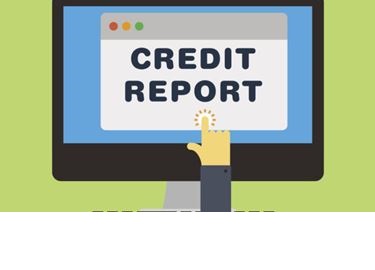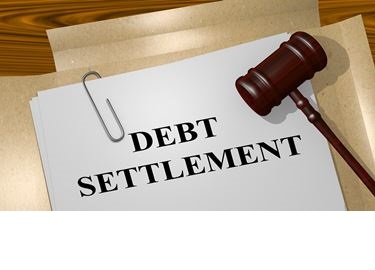How to Increase Your Credit Score 100 Points in 7 Easy Steps
Your credit score is the gateway to almost all your financial goals — from applying for a mortgage to purchasing a car. Having a good credit score can help you get the credit you need, as well as receive better interest rates and terms on loans, cell phone service plans and more.
So, what do you do if your credit score isn’t top-notch? Here are tips for how to increase your credit score by 100 points:
1. Check your credit score
You can’t start improving your credit score until you know where you stand. There’s a common misconception that checking your credit score lowers it. This isn’t accurate — only a soft inquiry occurs when you check your credit and it won’t affect your score because you’re not formally applying for credit.
So, where to get your score? You may be able to access your credit score for free through your bank, credit union or credit card company. Bank of America, Discover and Wells Fargo are examples of financial institutions and credit card companies that offer free FICO scores to customers. Your credit score will fall within the range of 300 to 850. Here are the rankings:
FICO Score ranges and ratings
• 850-800 — Exceptional
• 799-740 — Very good
• 739-670 — Good
• 669-580 — Fair
• 579-300 — Very poor
To get the best interest rate when applying for loans, your goal should be to have a good or better FICO Score. As you can see, a credit score increase of 100 points can have a huge impact on your financial life.
Here are the factors that affect your credit score, and how they’re weighted to determine your final score:
• Payment history (35% of your score): Your record of payment — whether on time or late — has the most influence on your credit score.
• Amounts owed (30% of your score): How much debt you owe in total — and your balances on revolving credit lines — are also heavily weighted.
• Length of credit history (15% of your score): How long (or short) your credit history is can also positively or negatively impact your score.
• Credit mix (10% of your score): Having a report with diverse accounts — like installment, credit card and retail accounts — can show creditors you have experience managing different account types, which can be also positive for your score.
• New credit (10% of your score): Too many inquiries for new accounts can signal that you’re a credit risk and that can also lower your score.
2. Review your credit score report for errors
Once you know where your credit score stands, it’s time to check your credit reports from each of the major credit reporting bureaus.
Your credit report includes the positive and negative credit history that impacts your score. Credit reports list your financial accounts with payment history (e.g., credit cards, installment loans and retail accounts) and, in some cases, public records or accounts in collections.
Due to COVID-19, you can now request a credit report for free once a week from each of the three major credit reporting bureaus — Equifax, TransUnion or Experian — at annualcreditreport.com.
Scan your report to look for any errors, such as accounts that don’t belong to you or incorrect late payments. If you’re wondering how to increase your credit score by 100 points fast, erasing negative records on your credit report, like an inaccurate late payment or a delinquent account that was fraudulent opened in your name, could be one way to do it.
You can dispute errors on your credit report by opening inquiries with each of the three major credit bureaus online or by writing a letter. Be prepared to provide any documents proving the mistake in your credit report. Don’t forget to follow up if you don’t get a response within 30 days.
When you’re looking at your credit report, also take note of which parts of your credit history have room for improvement. Do you have high debt balances? Have you missed payments recently? These are two key areas to consider focusing on to help grow your score in the coming months.
3. Address any outstanding payments
The biggest part of your credit history that may be working against your goal of quickly improving your credit score is your payment history. Missed payments that are more than 30 days late, for example, can lower your credit score roughly 100 points, and late payments stay on your credit report up to seven years.
The good news is that with time, the effect of late payments on your credit history will lessen. That’s because the impact of these payments gets smaller as they’re canceled out by more frequent and recent on-time payments.
Generally, the longer the account goes unpaid, the more impact it can have on your score, so don’t assume all is lost if a 30-day late payment pops up on your report. Clearing up the unpaid balance right away can help you avoid having it spiral into a more damaging 60-day or 90-day late payment.
Keep in mind that late payments — whether a few days late or months late — can affect more than just your credit standing. Credit card issuers often charge late fees and a penalty APR may also kick in when you miss a payment. Racking up late fees and high-interest charges can make it harder to control your debt balances.
4. Calculate your credit utilization ratio
Your credit utilization ratio compares the total amount of revolving credit available to you to the total balance you owe. A low ratio shows lenders you have more capacity to take on different lines of credit and have your balances under control.
Meanwhile, a high ratio signals to lenders that you may be having trouble managing your debts, thereby signaling you may be a risky customer. As a result, lenders may choose not to lend to you, or they may approve you for a loan or credit card with a higher interest rate.
To increase your credit score quickly, your credit utilization ratio should be less than 30% of your total available credit. To calculate your overall rate, follow these steps:
1.List your credit cards, as well as the balances and credit limits they carry
2.Add up your credit card balances
3.Add up your credit card limits
4.Divide your total balances by your total limits
5.Multiply by 100
Here’s an example of how this works if you had the following three credit cards:
Credit card Balance Credit limit Utilization ratio
Card A $2,500 $4,500 56%
Card B $1,300 $2,000 65%
Card C $850 $5,000 17%
Total $4,650 $11,500 40%
To find out your overall credit utilization ratio, you would divide $4,650 by $11,500 to arrive at 0.40. Then multiple by 100 to get 40%. This would be your credit utilization rate, and as you can see, it’s above the suggested 30%.
Plus, you have to also keep individual card ratios low as well. Both Card A and B have too high a ratio and the balances need to be lowered if you want to see a credit score boost.
If your utilization rate is looking a bit high, you should focus on bringing those balances down, since 30% of your credit score is determined by the amount of debt you carry.
In fact, lowering your credit utilization ratio may be one of the fastest ways to increase your credit score by 100 points
5. Keep your cards open and active
Again, the length of your credit history accounts for 15% of your credit score. If you — or your issuer — decide to close an inactive account, not only do you lose the available credit line, you will shorten the average age of accounts.
That’s why it can be important to keep your accounts open and active. Consider charging small amounts to your cards each month and setting up auto-payments to never miss a bill to ward off the card issuer from closing your account for inactivity.
Of course, for a credit card that comes with a high fee, you may have to review both the cost and your spending habits to see if it’s worth keeping the card open.
For example, if your travel card has a $250 fee and you’re not earning enough rewards to offset this fee right now, closing the account could save you money. In that case, keep a low-fee or no-fee credit card open so you still have some positive payment history to report to the credit bureaus.
6. Open new lines of credit sparingly
Make sure you’re pacing yourself when applying for new lines of credit since these qualify as hard inquiries that can lower your score. Don’t apply for credit card accounts one after the other, especially if you plan to purchase a house or car soon as you want your credit score to be in the best possible shape.
Opening multiple accounts is a sign that you may be a credit risk and it could hurt your chances of getting approved for a car loan or mortgage.
There is one exception to this rule: If you’re rate shopping for an installment loan like a student loan, mortgage or car loan, several hard inquiries within a 30-day period have the impact of a single inquiry.
In fact, rate shopping for an installment loan is actually encouraged because it lets you compare rates, fees and terms across multiple offers so you can choose the best one. Fortunately, you won’t be penalized for being a savvy shopper.
7. Maintain a healthy mix of credit types
Having diversity in your credit report is important. By maintaining both installment loans and revolving accounts, you’ll be showing lenders you can responsibly manage several different types of credit.
This doesn’t mean you should go out and apply for a personal loan if you only have revolving credit accounts at the moment. Only borrow what you need and what you’re capable of paying back. Just be mindful of the type of accounts you’re adding to your report while building credit, and know that diversity can be a very good thing that can help give your credit score a boost.
Benefits of a better credit score
Having a better score, or improving your credit score by just 100 points, can have a big impact on your financial life. Here’s why:
1.You may qualify for better rates: When lenders see that you have a good (or better) credit score, they’re more likely to trust you’ll repay any loan they give you. As a result, you may qualify for better interest rates — say for a personal loan. Qualifying for better interest rates on various lines of credit can save you thousands of dollars during your lifetime.
2.You may be more likely to receive credit offers: If you have a bad credit score, lenders will be less obliged to market to you. When your credit score is good, you’re more likely to have a wider selection of different types of loans, mortgages or other lines of credit when you need them.
3.Good credit scores help you when applying for everyday necessities: This includes cell phone plans, apartments or homes you’d like to rent, getting utilities turned on and more.
Having a good credit score is an excellent first step to getting a head start on your financial life. By following the steps above, you can start improving your score quickly.













